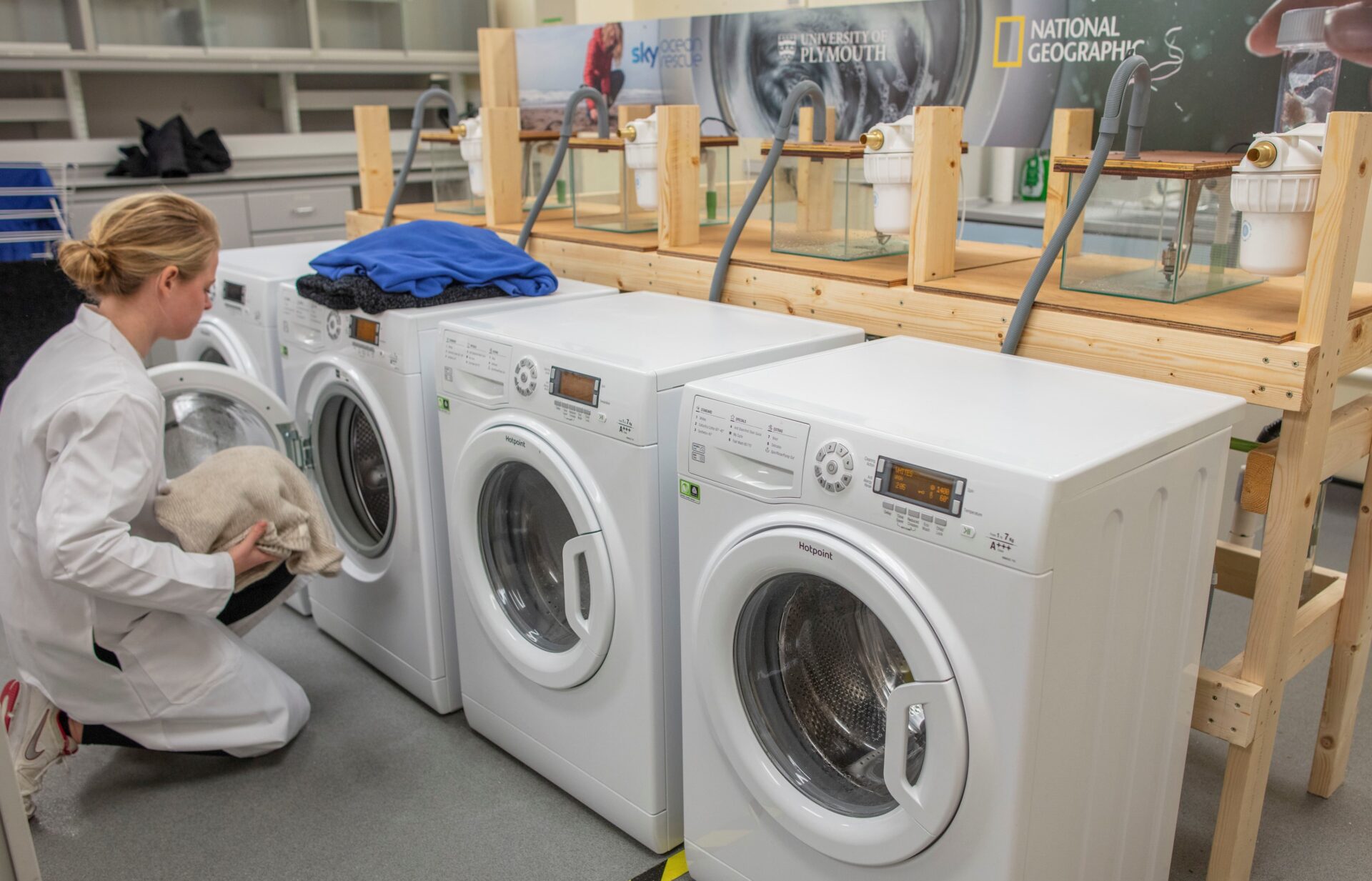News

Microplastics in washing
Wastewater from laundry is a major contributor to microplastics in our waterways and oceans. It’s estimated that around a third of microplastic pollution arises from microfibres released when we wash our clothes and household textiles. All fabrics break down and release microfibres during washing into microscopic strands less than 5mm in length and 1/1000mm in diameter – too small for the naked eye to see.
But fabrics such as acrylic, polyester, nylon, and elastane release microplastic particles that are hard to filter out due to their microscopic size; they pass into waste water which makes its way into rivers and oceans, and take a very long time to break down.
Removing microfibres from washing machine wastewater is quite challenging due to their size, so it’s good news that manufacturers of washing machines are beginning to think about filtering systems that can remove them from wastewater during the washing cycle.
Are microplastics a threat to our health?
The effects of microplastics on our oceans and marine life is well known, but the effects on human health is still being investigated. Evidence is growing that these tiny particles can lead to inflammation of body tissue, disturbances in the gut microbiome, and links with obesity and diabetes.
How to reduce microplastics in machine wastewater
If you are concerned about microfibres releasing from your clothing and household textiles during your washing cycle, there are some solutions that are easy to follow:
- Choose more natural fibres for your clothing, bedding, and towels etc. Cotton, silk, bamboo, hemp, and wool will still release microfibres, but not microplastics, especially if they’ve been produced organically.
- Fill your washing machine up – full loads cause less friction and fewer microfibres released.
- Wash at low temperatures and shorter cycles. Research carried out by Northumbria University found a 30% reduction in the amount of microfibres released in a 30-minute 15˚C wash cycle, compared to a 85-minute 40˚C cycle.
- Consider using a microfibre catcher in your washing machine. Reserch at the University of Plymouth found that the most effective of the catcher devices tested reduced the quantity of microfibres being released by 78%.
- Consider installing a retro-fit filtration system on your washing machine. PlanetCare claim that their filters (attached to the washing machine wastewater pipe) can prevent the equivalent of 52 plastics bags making their way into our oceans every year. Gulp are developing “plastic free washing” with their soon to launch filtration sytem, and working with leading manufacturers to adapt their designs.
- Choose high quality clothes with more densely woven fibre structures where possible as there is some evidence that they release fewer microfibres.
More reading
Primary Microplastics in the Oceans: a Global Evaluation of Sources
Microplastics as an Emerging Threat to the Global Environment and Human Health
Washing machines with microfibre filters: AEG – Grundig – Samsung






